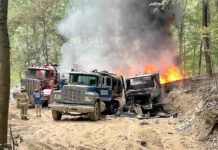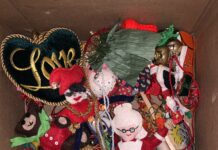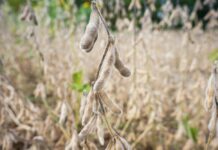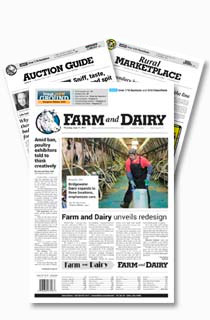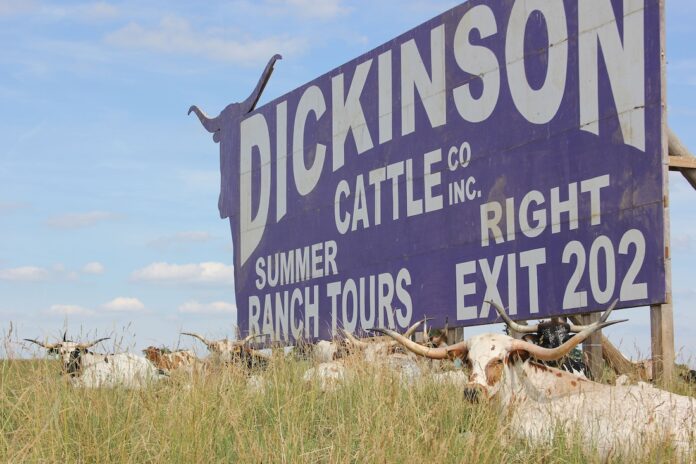
BARNESVILLE, Ohio — Texas Longhorn bulls are photographed when the time is right, and on a Friday afternoon in May, Darol Dickinson takes a camera out of his office and gets in a bull’s pasture at his Ohio ranch, Dickinson Cattle Company.
“There’s a certain period of time when the bulls have slicked off from winter and they aren’t worn down from breeding cows,” Darol says. “And the flies aren’t here yet, and I try to get new photographs of all of our best herd sires.”
The black-spotted bull is 4 or 5 years old and watches Darol park his ATV in the sloped, grassy pasture and ready his lens. The bovine registered over a ton the last time it was weighed by junior herdsman, Doug Burris, who gets in the pasture with Darol to help move the bull. The two move in unison, Darol wearing a blue plaid shirt and cowboy hat and Doug in a red shirt and baseball hat, holding a pitchfork and waving a white flag to grab the bull’s attention.
IQ TESTS FOR CATTLE
“I bought my first Longhorns in 1967,” Darol says. “I started accumulating performance data on every animal from birth, twice a year.”
Dickinson Cattle Company, in Belmont County, Ohio, is primarily focused on marketing Texas Longhorns. Darol, the author of “Photographing Livestock: The Complete Guide,” has also taught photography, and pays close attention to his camera’s elevation, background and light, among other points.
Burris walks closer to the bull to get it away from the gate.
“We sell semen on him for 28 times the price of gold,” Darol says.
Darol notes that Texans buy a lot of the ranch’s top cattle, and genetics have been shipped to 33 countries. Some of the cows can sell for as much as $700,000.
The cattle go through testing, Darol says, but something that sets his stock apart from others is the IQ test that he’s developed over his lifetime of ranching, first in Colorado and then in Ohio.
“Since the 1970s, we’ve started testing our bulls for IQ,” Darol says. “We believe we have the highest IQ cattle of anybody in the industry.”
The cattle are scored on how they learn halter training and how quickly they learn.
“We’ve selected bulls for over 50 years on IQ. One of 10 scoring systems we use is the Temple Grandin exit score, which is a very good scoring process,” Darol says, “Then we score them for herd deportment mentality and obedience learning time when halter training.”
In the pasture, with the bull, Doug waves the white flag and raises the pitchfork in the air.
“Cattle understand horns,” Darol says about the pitchfork. His Texas Longhorn steers have 100-inch horns from tip to tip. “Even cattle without horns, respect horns.”
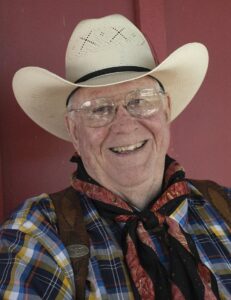
The bull stubbornly looks in the opposite direction. Darol says you have to speak their language. He relentlessly coaxes the bull to reposition itself for a better photograph and Doug moves around the bull until its front legs are standing slightly higher than the rear.
“Although exporting of live cattle, semen and embryos is a low-income fragment of Dickinson Cattle Company, it is our goal to start Texas Longhorn herds in as many countries as possible,” Darol says.
Darol likes Texas Longhorns because they are smart and know how to forage. He explains that other countries “do not have the grain to feed livestock, so Texas Longhorns are more profitable due to their browsing preferences. The last thing someone in the back side of Africa or Australia is concerned about is marbling or gain on grain. Texas Longhorns fit these areas better than other breeds.”
The bull looks over and Darol takes about 20 photos, repositions his camera, and takes 20 more.
“Ninety-nine percent of the people who buy semen on our bulls will never see the bulls,” Darol says. “They’ll only see the photos.”
PROS AND CONS OF TECHNOLOGY
Behind the scenes, he’s prepared to prevent flies, giving the cattle a “vapor tag in their ear” during the summer that will send a “vapor all around their body and either kill a fly if it lands on them or make it sick and it will leave.”
Each cattle tag costs $2 and it prevents a heavy infestation of flies.
“When you go to somebody’s place in Ohio and you see flies all over the cows, a heavy infestation of flies will drink a quart of blood a month, and in a six-month period of time, they will drink a gallon-and-a-half of blood,” Darol says. “That reduces the cow’s milk production or fertility, her personal gain and personal health.”
He doesn’t run after a lot of new technology in ranching, he says, because some types of new technology “may be more costly than it is worth.”
“There’s things behind the scenes and somebody can make a rule in the state or the federal government and all of a sudden it costs you a thousand bucks,” he says.
He detests government regulations, like electronic identification ear tags mandated in 2024 by the U.S. Department of Agriculture to track cattle.
“The government seldom improves or makes things better,” he says. “The cost of anything the government does is always just pitiful.”
REGENERATING THE LAND
“Ohio is probably the greatest ranching state in the nation,” Darol says after he has enough pictures of the bull and drives to a pasture where about 80 cows and calves are grazing.
“The only problem with it is acquiring enough land to make it feasible,” he says. “You’ve got to have at least enough land to run 200 cows. That’s what holds back Ohio, just trying to get enough land put together … but right now, our biggest problem is the government keeps buying private land and taking it out of private enterprise.”
He notes the slopes and the tops of the hills where his Texas Longhorn graze were formed by machinery.
“This used to be a coal mine,” he says. “The Muskrat Valley yielded over $2 billion in strip-mined coal” before it was reclaimed with bulldozers and restored with native grasses.
He points out a 300-acre pasture and says the ranch is shaped like the United States. What was once stripped for coal is now pasture areas with names like West Texas and East Texas.
“This year we will be breeding 643 cows,” Darol says.
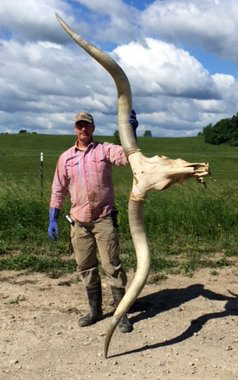
MARKETING IS KEY
Along the ranch’s entrance road, he checks the ranch’s information board that shows a map of the property and free information about the seven divisions of Dickinson Cattle Ranch and the beef cattle industry.
“The secret of success in ranching or anything, all success comes with marketing,” Darol says. “Behind all marketing is some political element, and then the key is to produce an honorable business and try to avoid the government, try to keep away from it.”
Success is also not about imitating others, he says.
“The key about wealthy people is never imitate a wealthy person, because they won’t let you know they’re losing money,” Darols says. “In our world, a lot of people imitate the appearance of success to their own failure.”
A RANGE OF ECONOMICAL LESSONS
One of the pieces of paper that Darol shares is a pie chart titled, “Consumer Beef Dollar Distribution,” which explains where a dollar goes in the cattle business when it is divided between calf producers, feeders, packers, traders, truckers, veterinarians and auctioneers.
“The key to all of this is to take all the pieces of pie you can and then you will be safe,” Darol says.
He says the key to success is to not become specialized in any one area.
“For instance, use little or no bank loans,” Darol says. “Don’t borrow a lot of money. Do your own vet care. Don’t haul them anywhere. Be self-contained and do cow-calf, the feeder, the packer, the trader, the backgrounder, no trucking, no banking, very little of that, no sale barn commissions. If you do all of that yourself, it gets very nice.”
Darol’s lifetime of ranching experience has led to a three-book series: “Fillet of Horn,” “Horn Stew” and “Larapin Horn.”
He reflects in “Horn Stew” on successes and failures, like watching his dad fulfill his dreams “from a little boy picking cotton on a sharecropper’s farm to breeding and exhibiting a pasture full of world champions” to his “bright idea” to get Johnny Cash into the Longhorn business: “Why pay for cattle if someone will donate them for free?”
“There’s one chapter in ‘Fillet of Horn’ about how to buy and sell ranch land,” he says. “It’s a chapter with 18 little subchapters on buying and selling and negotiating on how to do it and how to not do it. Some of them have instructions, and others, you just kind of have to look for the lesson.”
There’s plenty of lessons to learn about on the ranch.
MAINTAINING A LOCAL CONNECTION
Monday through Saturday, the ranch welcomes people to tour and shop the store’s freezers of beef and industry goods.
As customers arrive from all over to the store’s parking lot, an excited father drives up with his family and parks. The young children, putting their hands together like they are praying, look around with wide eyes as their father says they are visiting to look at the cows. Darol grins and says two of his Texas Longhorns are under honey locust trees right next to the fence along the gravel road.
He asks other people in the parking lot if they need any help.
Lynne Miller from Wooster, shopping for ground beef and steaks, says the signs for Dickinson Cattle Ranch along the road made her curious enough to stop.
“We come down every year to clean graves in Barnesville and this is the second time I’ve stopped at the ranch,” she says. “It’s fun to see the Longhorns.”
Darol knows there is a growing demand for locally raised Texas Longhorn beef “without the use of hormones, implants, steroids.”
“People want all-natural food,” he says.
As he drives his ATV through a cow pasture and the cows moo, Darol speaks to them.
“You’re doing a good job, dear girl,” he says to a cow feeding a calf, “keep doing what you’re doing.”
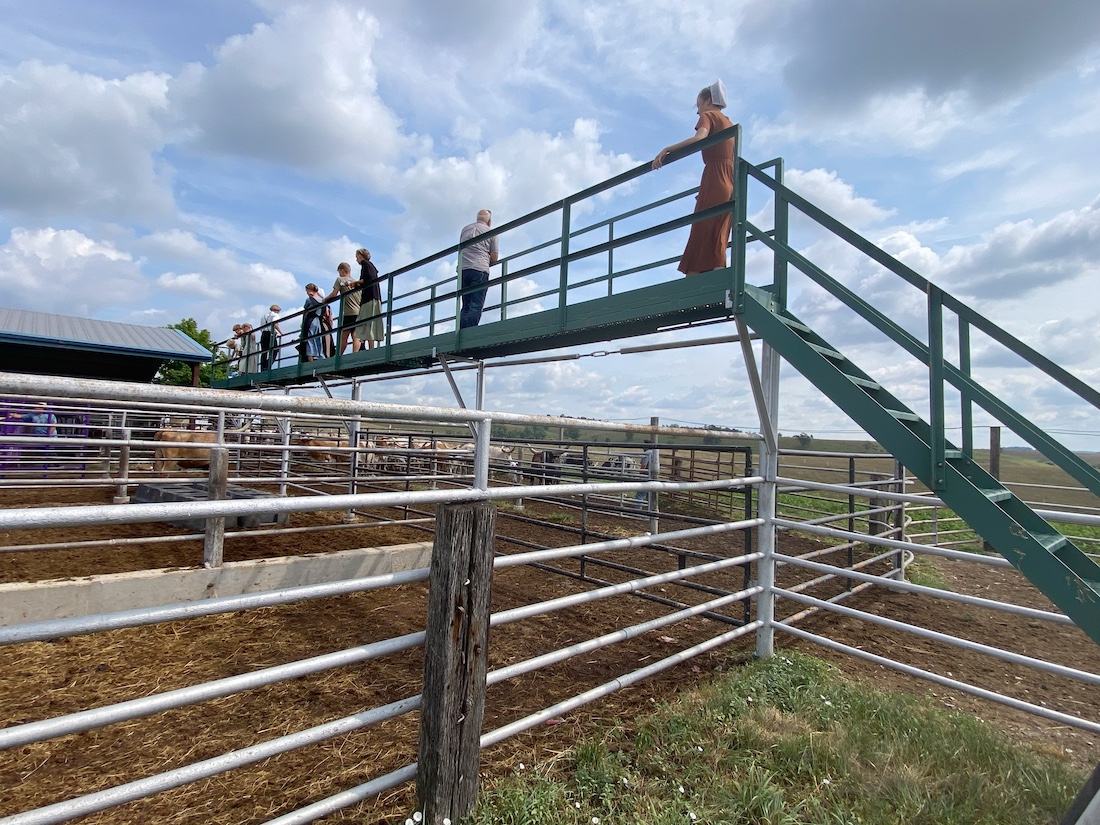
(Photo courtesy of Dickinson Cattle Co.)


